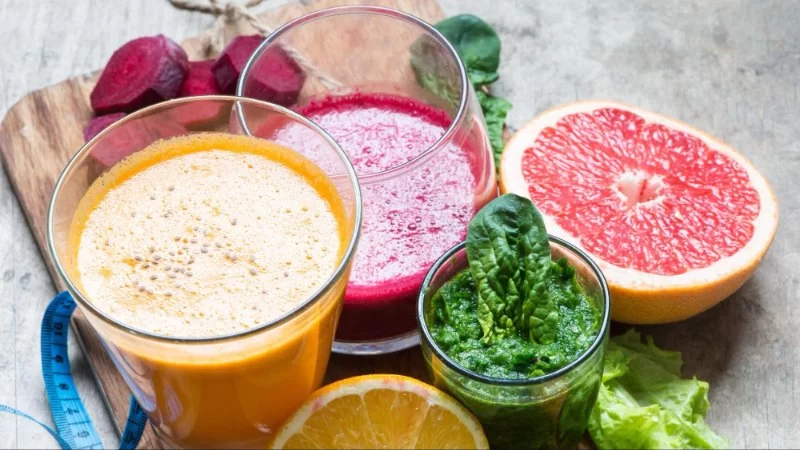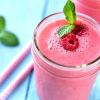- why-juicing-for-nutritional-boosts-matters
- understanding-the-best-time-to-juice
- how-to-start-juicing-effectively
- common-mistakes-and-how-to-avoid-them
- real-life-success-stories-and-daily-routines
- how-heartcare-hub-can-support-your-juicing-journey
1. Why Juicing for Nutritional Boosts Matters
Juicing has become more than a wellness trend—it’s a proactive choice for people looking to fuel their bodies with dense nutrients in a quick, digestible form. Whether you're trying to fight fatigue, enhance immunity, or increase daily energy, juicing delivers a concentrated dose of vitamins, minerals, and antioxidants that are often hard to consume in regular meals.
1.1 The Nutrient Density Advantage
When you juice vegetables like kale, spinach, celery, or carrots, you're concentrating their nutrients into a small glass. Instead of eating an entire plate of greens, a single juice can contain the equivalent of multiple servings of produce, providing a swift nutritional boost to your system.
1.2 Why People Are Turning to Juicing
In today’s fast-paced lifestyle, meals are often rushed or skipped. Juicing is a practical solution to fill in nutritional gaps. Busy professionals, parents, athletes, and even seniors are turning to juicing to maintain vitality without the hassle of heavy meal prep.
2. Understanding the Best Time to Juice
While juicing is beneficial anytime, choosing the right moment during the day can significantly affect nutrient absorption and how you feel afterward.
2.1 Morning Juice: Jumpstarting Your Day
Drinking juice on an empty stomach—especially in the morning—allows your body to absorb nutrients more effectively. It’s a clean, energizing way to begin the day, especially when using ingredients like lemon, ginger, or apple to wake up your system naturally.
2.2 Pre-Workout or Post-Workout
Fresh juice before a workout can provide a quick energy boost, particularly with beets or apples. After workouts, juicing can aid recovery by replenishing lost electrolytes and reducing inflammation—especially when using ingredients like pineapple or cucumber.
2.3 Evening Considerations
Juicing in the evening is less common but can be helpful if done correctly. Avoid overly sugary fruit blends and opt for calming ingredients like celery, spinach, and chamomile for a relaxing night drink.
3. How to Start Juicing Effectively
If you’re new to juicing, it’s easy to get overwhelmed by recipes and equipment. Start simple and build habits over time.
3.1 Choosing the Right Juicer
Cold-press juicers are ideal for preserving nutrients, but centrifugal models are faster and more budget-friendly. The key is consistency—pick a model you’ll actually use regularly.
3.2 Focus on Vegetable-Based Juices
Fruit juices are delicious but can spike blood sugar. A 70/30 mix of vegetables to fruits keeps things balanced. Try combinations like kale, cucumber, lemon, and green apple to start.
3.3 Batch Prep for Convenience
Juicing every single day can be time-consuming. Try prepping ingredients or even juice batches ahead of time (just store in airtight glass containers and consume within 48 hours).
4. Common Mistakes and How to Avoid Them
Even the healthiest intentions can go sideways without a clear plan. Here’s how to sidestep the most common juicing pitfalls.
4.1 Overloading on Fruit
Many beginners make juices that taste like smoothies—sweet and packed with fruit sugars. While fruit is healthy, too much fructose can undermine your goal. Stick to low-glycemic options and focus on leafy greens.
4.2 Replacing All Meals
Juicing should supplement your diet, not replace balanced meals entirely. Prolonged juice-only diets may lack fiber, protein, and essential fats your body needs for sustained health.
4.3 Not Listening to Your Body
If juicing makes you feel bloated, sluggish, or jittery, reassess your ingredients. Some people may have sensitivities to raw spinach or high-oxalate veggies. Adjust and observe how your body responds.
5. Real-Life Success Stories and Daily Routines
Sarah, a 42-year-old teacher from Texas, started juicing to combat mid-afternoon energy crashes. By integrating a green juice mid-morning, she not only avoided caffeine spikes but also improved her digestion and sleep.
Meanwhile, Jake, a CrossFit trainer, uses beetroot and ginger juice before workouts. His stamina and focus have improved, and he attributes faster recovery to the anti-inflammatory effects of the juice blends.
These aren't isolated cases. Across the U.S., people are discovering how juicing fits into different lifestyles—from weight management to immune support to mental clarity.
6. How HeartCare Hub Can Support Your Juicing Journey
Whether you’re just starting or looking to optimize your juicing habits, HeartCare Hub offers guidance, equipment recommendations, and curated products to support your wellness journey. From top-rated juicers to organic ingredient guides, their platform is designed to make your experience seamless.
6.1 Vetted Recommendations by Health Experts
The team at HeartCare Hub curates only scientifically-backed solutions and products with real results. Their platform includes community reviews, vet-approved recipes, and expert insights to build your confidence every step of the way.
6.2 Personalized Wellness Tools
You’ll also find habit trackers, meal pairing suggestions, and even seasonal juice recipes to keep your routine interesting and effective year-round.





















